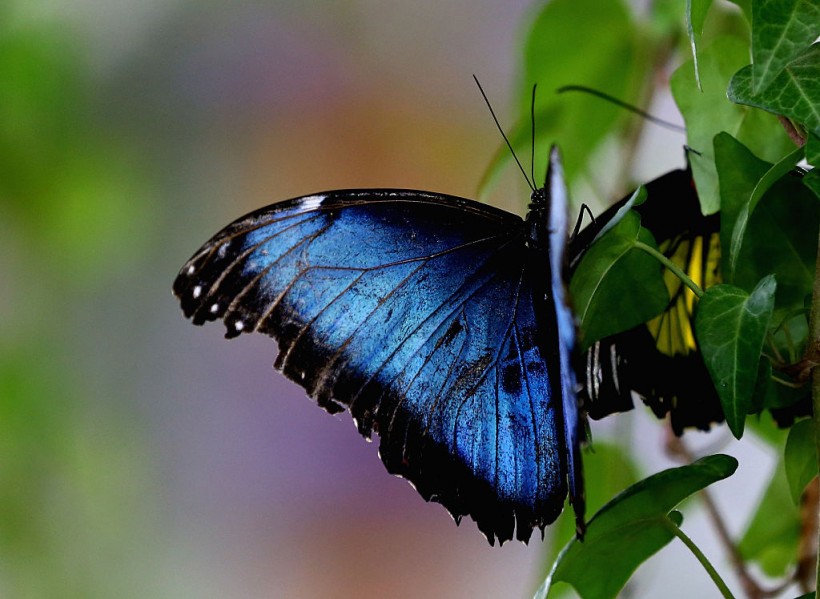Butterflies are among the most diverse and beautiful animals on Earth, with more than 20,000 species described so far.
However, many of them are still poorly known or undiscovered, especially in tropical regions.
Nevertheless, there is a new species of butterfly from Amazonia, which was named after a museum specialist who has provided invaluable support to butterfly research for many years.
Caeruleuptychia harrisi: a new species of blue-eyed satyr
 (Photo : Francois Nel/Getty Images)
(Photo : Francois Nel/Getty Images)

Caeruleuptychia harrisi is a new species of butterfly belonging to the subfamily Satyrinae, also known as the brown or gray butterflies, as per Phys.org.
These butterflies are characterized by their cryptic coloration, which helps them blend in with their surroundings, and their eyespots, which may deter predators or divert their attacks.
Caeruleuptychia harrisi belongs to a group of satyrs that have blue eyes, which are rare among butterflies.
The new species was discovered by a team of researchers led by Shinichi Nakahara from Harvard University, who published their findings in the journal ZooKeys.
The researchers examined specimens from various museums and collections, as well as DNA sequences, to determine the taxonomic status and phylogenetic relationships of Caeruleuptychia harrisi.
They found that it is distinct from other closely related species by its wing pattern, genitalia and molecular data.
Caeruleuptychia harrisi is known from Brazil, Peru and Ecuador, where it inhabits lowland rainforests.
It is a small butterfly, with a wingspan of about 25 millimeters.
Its dorsal wing surface is dark brown, with a faint orange band on the forewing. Its ventral wing surface is light brown, with a prominent orange band and two black rings on the forewing.
The hindwing has several small eyespots near the margin. The eyes are bright blue.
Also Read: Scientists Trace Butterfly Evolutionary History Using DNA Advances
A tribute to a museum specialist
The new species was named in recognition of Brian P. Harris, who worked as a museum specialist at the Smithsonian National Museum of Natural History (USNM) from 2005 to 2019, as per the BBC.
Harris was responsible for curating the Lepidoptera (moths and butterflies) and Hymenoptera (ants, bees and wasps) collections at USNM, which are among the largest and most important in the world.
He also collected specimens in various countries, including Brazil, where he collected the type specimen of Caeruleuptychia harrisi.
The researchers dedicated the new species to Harris "for his tireless effort in facilitating butterfly research at USNM by going above and beyond to support visiting researchers".
They praised his professionalism, generosity and enthusiasm, which made him a valuable colleague and friend to many scientists.
They also noted that Harris personally contributed to the discovery and description of several new species of butterflies.
Harris retired from USNM in 2019, but he continues to be involved in Lepidoptera research as an emeritus museum specialist.
He expressed his gratitude and surprise for having a new species named after him.
"It is an honor to have my name associated with such an amazing group of animals," he said.
Highlighting the role of museum specialists
The discovery of Caeruleuptychia harrisi illustrates the importance of museum collections and specialists for advancing our knowledge of biodiversity.
Museum collections provide invaluable sources of information and material for taxonomic and phylogenetic studies, as well as for conservation and education purposes.
Museum specialists play a crucial role in maintaining, organizing and facilitating access to these collections, as well as supporting researchers in various ways.
The naming of Caeruleuptychia harrisi after Brian P. Harris is a way of acknowledging and celebrating his work and contributions to Lepidoptera research.
It is also a way of raising awareness about the often-overlooked role of museum specialists in science
Related article: Butterflies: Extinction by 2050? Habitat Pointers, Too.
© 2024 NatureWorldNews.com All rights reserved. Do not reproduce without permission.

![Tsunami Hazard Zones: New US Map Shows Places at Risk of Flooding and Tsunamis Amid Rising Sea Levels [NOAA]](https://1471793142.rsc.cdn77.org/data/thumbs/full/70325/280/157/50/40/tsunami-hazard-zones-new-us-map-shows-places-at-risk-of-flooding-and-tsunamis-amid-rising-sea-levels-noaa.jpg)



